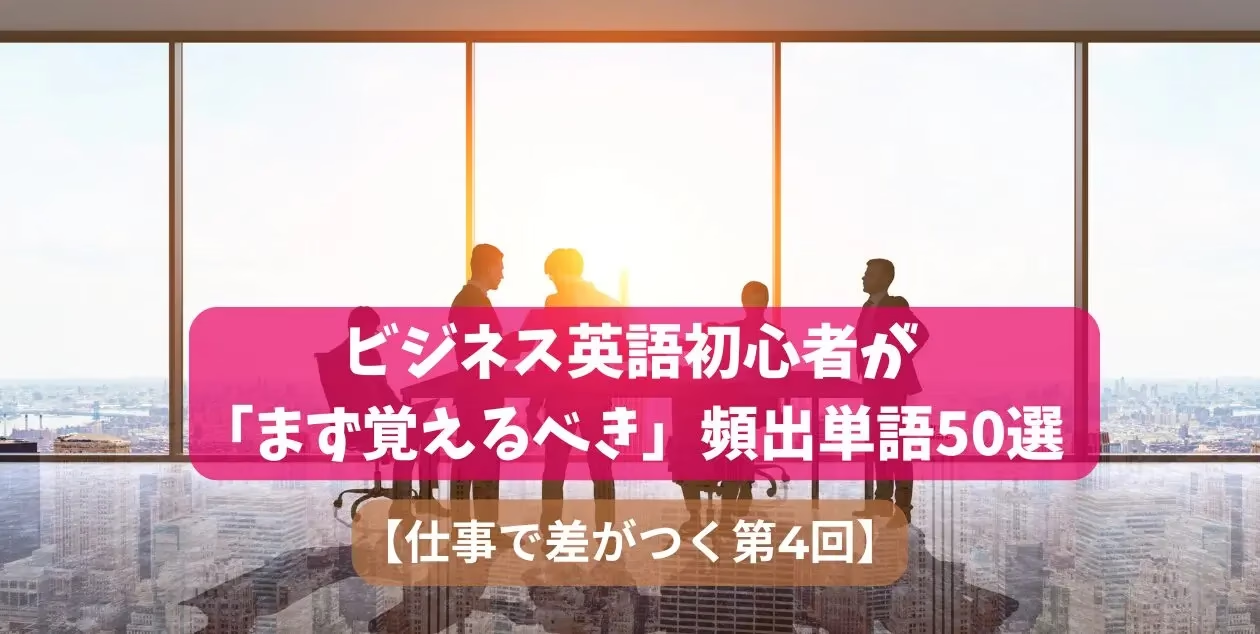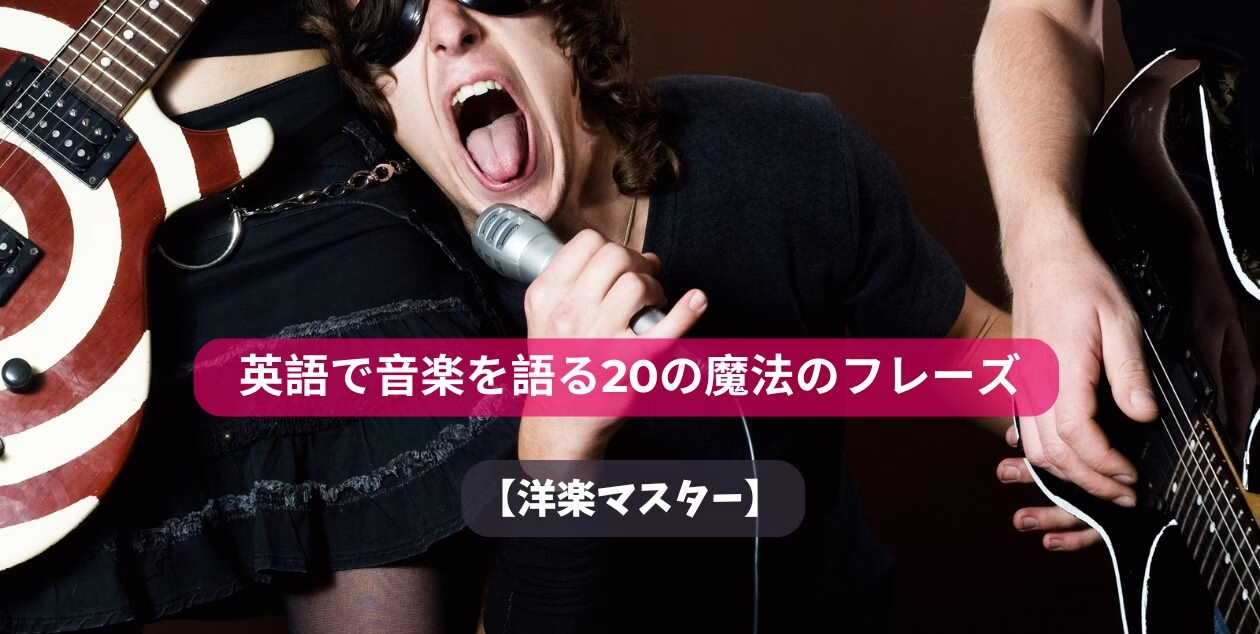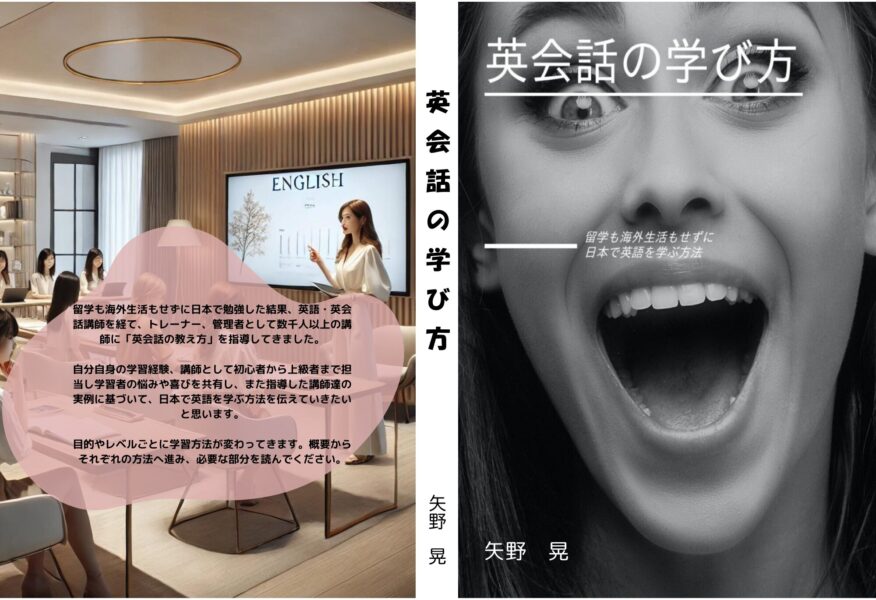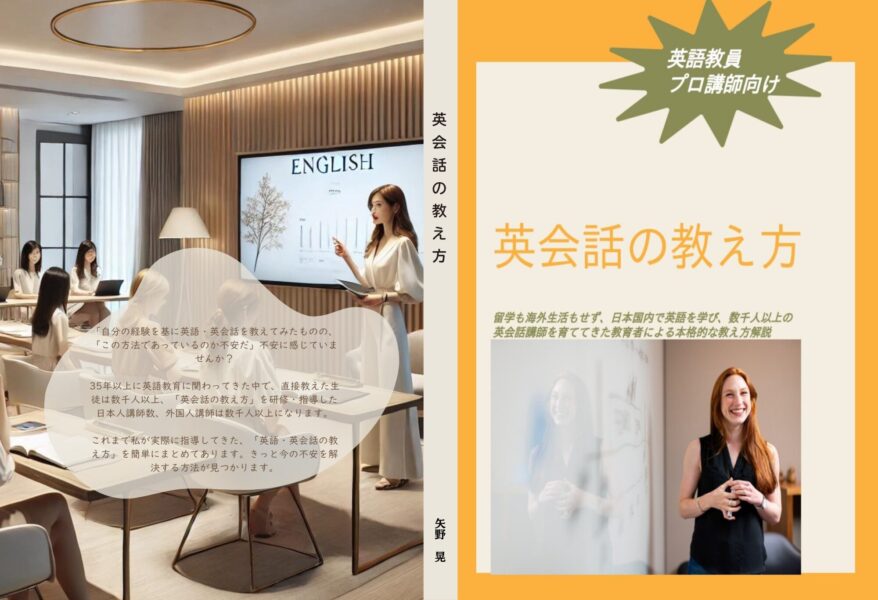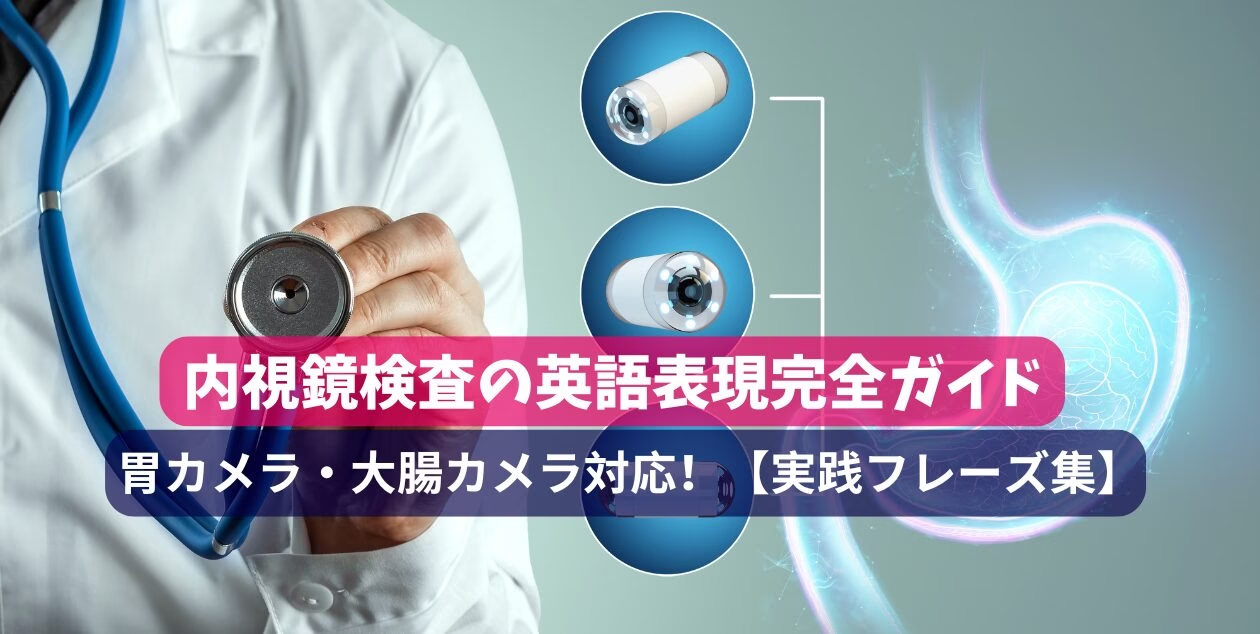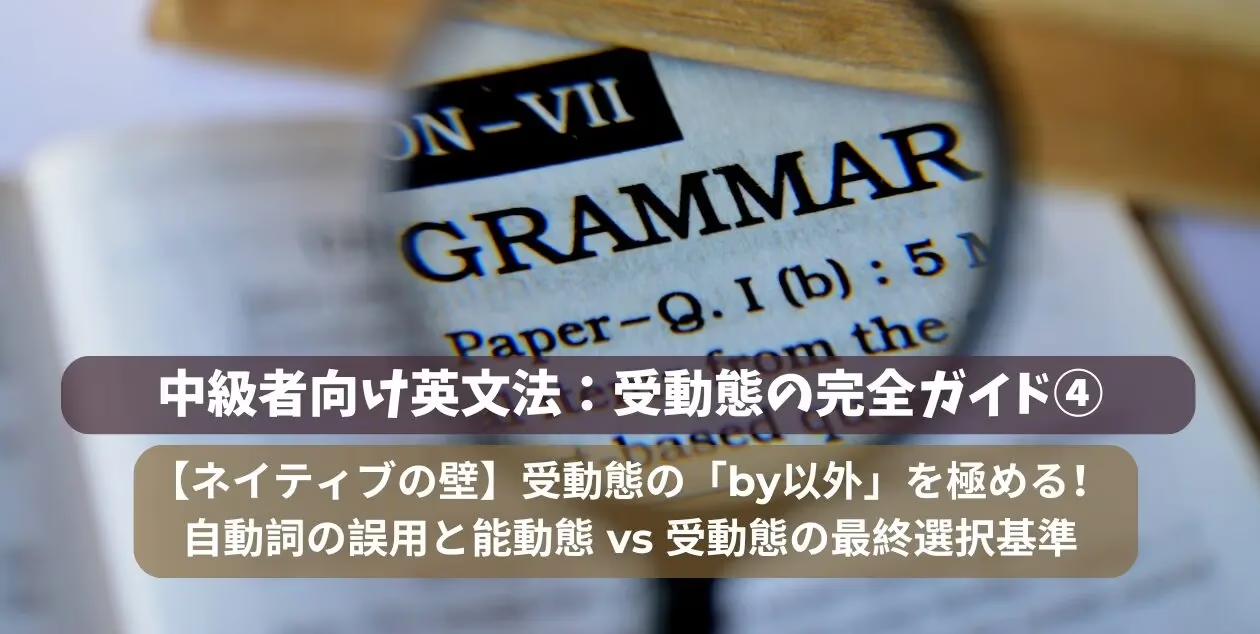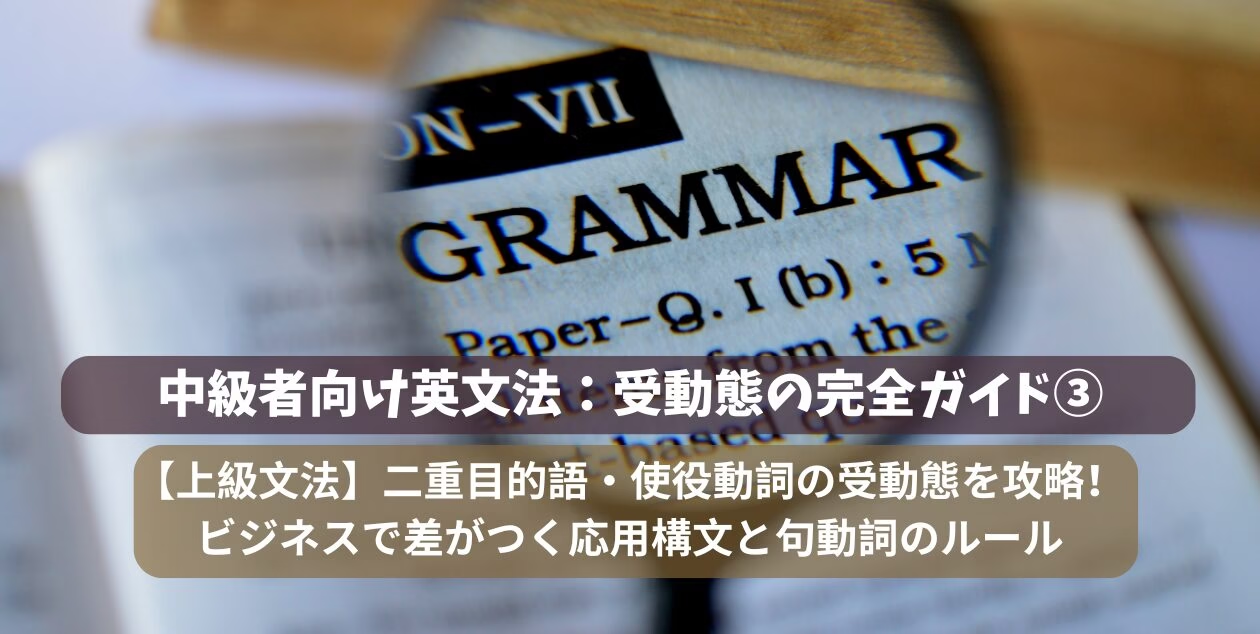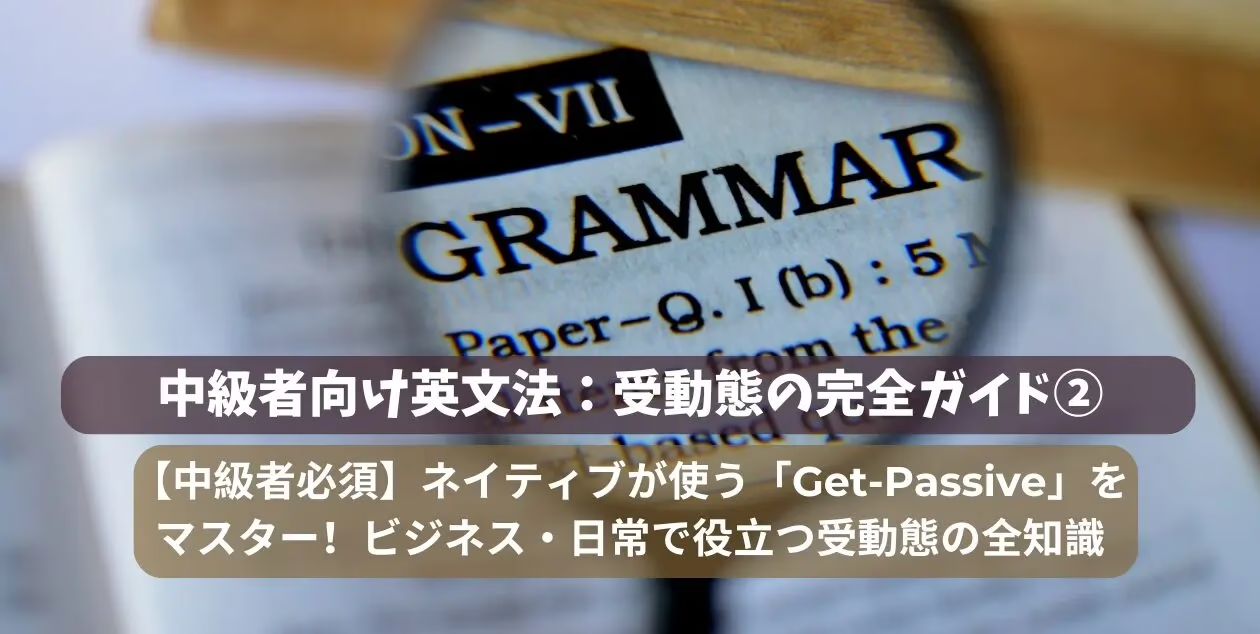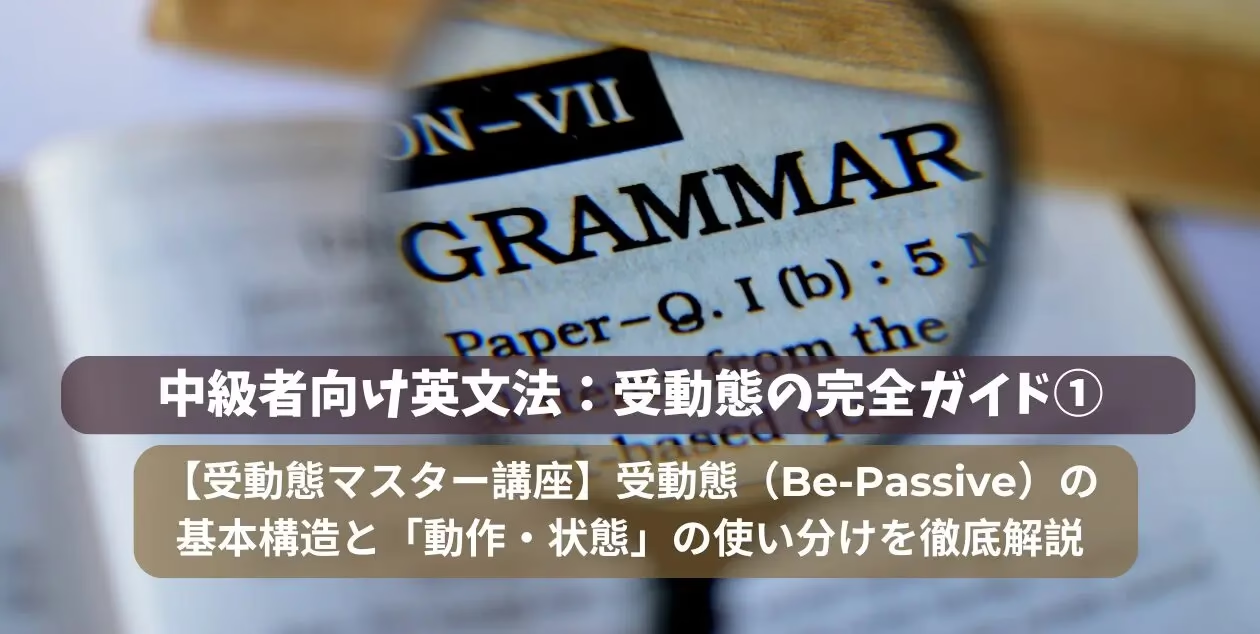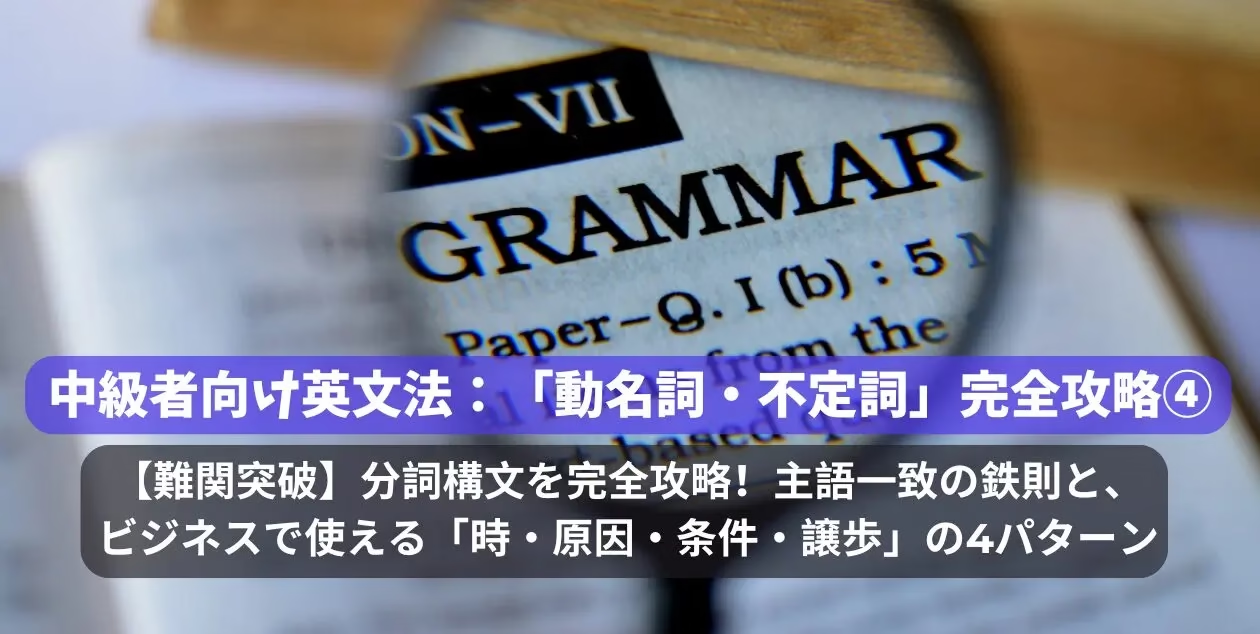グローバル化が加速する現代の医療現場において、内視鏡検査に関する英語表現を習得することは、医療従事者にとって不可欠なスキルとなっています。外国人患者さんへの対応はもちろん、国際学会での発表、海外での研修など、胃カメラ(Gastroscopy)や大腸カメラ(Colonoscopy)といった専門的な内視鏡検査に関する英語力が求められる場面は増える一方です。
しかし、「専門用語が多くて難しそう」「検査の流れを英語でスムーズに説明できるか不安」と感じている方もいらっしゃるかもしれません。内視鏡検査特有の英語表現は、一般的な英会話とは異なるため、体系的に学ぶことが非常に重要です。
本記事では、胃カメラと大腸カメラの検査の流れに沿って、実際に使用される英語表現を徹底的に解説します。検査の予約から事前の準備、当日の処置、検査の実施、そして結果説明に至るまで、各段階で役立つフレーズを、発音記号、詳細な意味、実践的な例文、さらには会話例や主要な検査機器・器具の名称と合わせてご紹介します。この包括的なガイドを通して、明日からすぐに現場で活用できる実用的な英語表現を習得し、自信を持って外国人患者さんに対応できるようになりましょう。
基本的な内視鏡検査用語
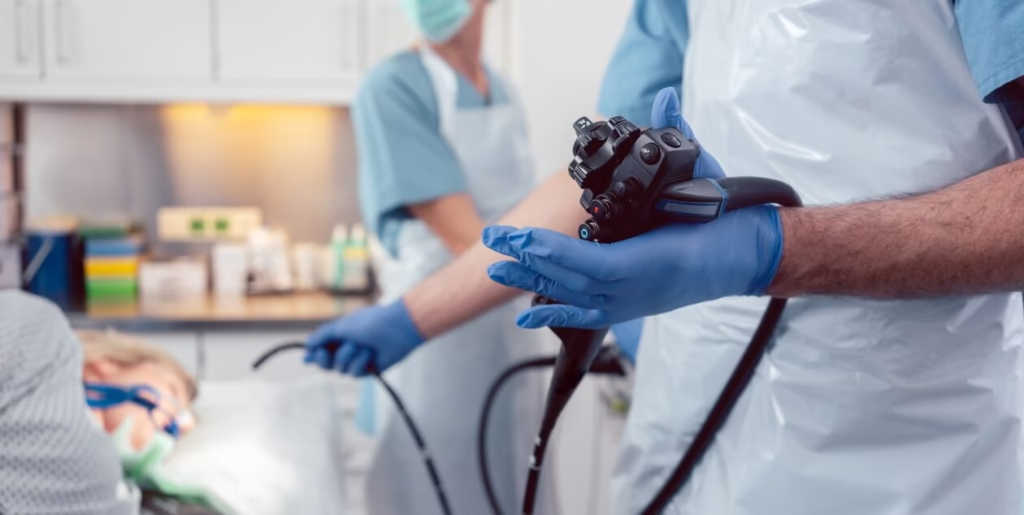
主要な検査用語
内視鏡検査
- 英語表現: endoscopy
- 発音: [ˌɛndəˈskəpi]
- 意味・解説: 体内に内視鏡を挿入して、消化管などの内部を観察する検査の総称
- 例文: “The doctor recommended an endoscopy to examine the digestive tract.”
- 和訳: 「医師は消化管を調べるため内視鏡検査をすすめました。」
胃部内視鏡検査
- 英語表現: gastroscopy または gastroscopic examination
- 発音: [ɡæsˈtrɒskəpi]
- 意味・解説: 口や鼻から胃まで内視鏡を挿入して胃の状態を観察する検査
- 例文: “Gastroscopy is commonly used to detect stomach ulcers.”
- 和訳: 「胃部内視鏡検査は胃潰瘍の発見によく用いられます。」
大腸内視鏡検査
- 英語表現: colonoscopy
- 発音: [ˌkɒləˈnɒskəpi]
- 意味・解説: 肛門から大腸に内視鏡を挿入し、大腸全体を観察する検査
- 例文: “Colonoscopy is effective in detecting colon polyps and cancers.”
- 和訳: 「大腸内視鏡検査は大腸ポリープやがんの発見に有効です。」
胃部レントゲン検査
- 英語表現: upper gastrointestinal (GI) X-ray examination または barium swallow test
- 発音: [ˈʌpər ˌɡæsˌtroʊɪnˈtɛstɪnəl ˈeksˌreɪ ɪɡˌzæmɪˈneɪʃən], [ˈbɛriəm swɑːloʊ tɛst]
- 意味・解説: バリウムを飲んで胃の形や動きをX線で撮影する検査
- 例文: “The patient underwent an upper GI X-ray examination with barium.”
- 和訳: 「患者はバリウムを使った胃部レントゲン検査を受けました。」
胃部内視鏡検査(胃カメラ)の英語表現
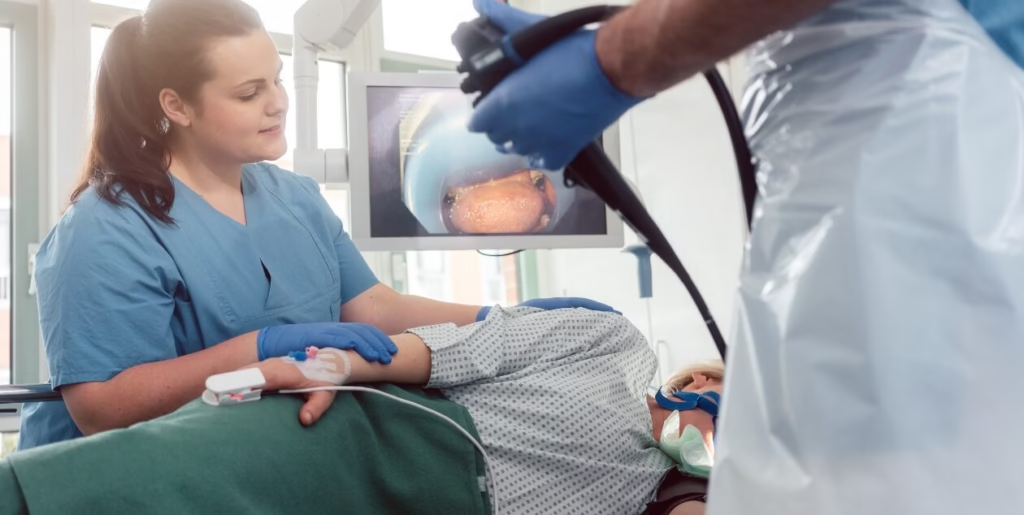
胃カメラ検査は6つの段階に分けて英語表現を習得することが効果的です。
1. 予約・事前診察
予約
- 英語表現: appointment
- 発音: [əˈpɔɪntmənt]
- 意味・解説: 検査日の予約を取ること
- 例文: “You need to make an appointment for the gastroscopy.”
- 和訳: 「胃カメラ検査の予約を取る必要があります。」
事前診察
- 英語表現: preliminary consultation
- 発音: [ˌpriːˈlɪmɪnɛri ˌkɑːnsəlˈteɪʃən]
- 意味・解説: 検査前に症状や希望を医師に伝える診察
- 例文: “Please attend a preliminary consultation before the examination.”
- 和訳: 「検査前に事前診察を受けてください。」
2. 検査前日〜当日の準備
食事制限
- 英語表現: dietary restriction
- 発音: [ˈdaɪəteri rɪˈstrɪkʃən]
- 意味・解説: 検査前に消化の良い食事に制限すること
- 例文: “Please follow the dietary restrictions before your examination.”
- 和訳: 「検査前は食事制限を守ってください。」
絶食
- 英語表現: fasting
- 発音: [ˈfæstɪŋ]
- 意味・解説: 検査前日の夜以降は食事を摂らないこと
- 例文: “Please finish your supper by 9 p.m. and do not eat after that.”
- 和訳: 「夜9時までに夕食を終えてください。それ以降は絶食です。」
3. 検査当日の事前処置
消泡剤
- 英語表現: anti-foaming agent
- 発音: [ˈænti ˈfoʊmɪŋ ˈeɪdʒənt]
- 意味・解説: 胃内の泡を消すために服用する薬剤
- 例文: “You will drink an anti-foaming liquid before the procedure.”
- 和訳: 「検査前に消泡剤を飲んでいただきます。」
咽頭麻酔
- 英語表現: throat anesthesia
- 発音: [θroʊt ˌænəsˈθiːzjə]
- 意味・解説: のどの不快感を軽減するための局所麻酔
- 例文: “Local anesthesia will be applied to your throat to reduce discomfort.”
- 和訳: 「不快感を軽減するため、のどに麻酔をします。」
4. 検査実施
内視鏡挿入
- 英語表現: endoscope insertion
- 発音: [ˈɛndəˌskoʊp ɪnˈsɜːrʃən]
- 意味・解説: 内視鏡を口または鼻から体内に挿入すること
- 例文: “The doctor will perform endoscope insertion through your mouth.”
- 和訳: 「医師が口から内視鏡を挿入します。」
観察
- 英語表現: observation
- 発音: [ˌɑːbzərˈveɪʃən]
- 意味・解説: 内視鏡で消化管内部を詳しく観察すること
- 例文: “The doctor will inspect your stomach during the observation phase.”
- 和訳: 「医師が観察中に胃の中を調べます。」
5. 検査後の安静・リカバリー
回復
- 英語表現: recovery
- 発音: [rɪˈkʌvəri]
- 意味・解説: 検査後の体調回復期間
- 例文: “You will rest in the recovery room for about 30 minutes.”
- 和訳: 「リカバリー室で30分ほどお休みいただきます。」
検査後の安静
- 英語表現: post-examination rest
- 発音: [pəʊst ɪgˈzæmɪˌneɪʃən rɛst]
- 意味・解説: 検査終了後に必要な安静期間
- 例文: “Post-examination rest is important for your safety.”
- 和訳: 「検査後の安静は安全のために重要です。」
6. 結果説明・判定
結果説明
- 英語表現: explanation of results
- 発音: [ˌɛkspləˈneɪʃən əv rɪˈzʌlts]
- 意味・解説: 検査で得られた結果についての医師による説明
- 例文: “The doctor will provide an explanation of results after reviewing the images.”
- 和訳: 「医師が画像を確認後、結果説明を行います。」
生検
- 英語表現: biopsy
- 発音: [ˈbaɪɒpsi]
- 意味・解説: 異常な組織を採取して詳しく調べる検査
- 例文: “If necessary, a biopsy will be performed during the procedure.”
- 和訳: 「必要があれば検査中に生検を行います。」
大腸内視鏡検査(大腸カメラ)の英語表現
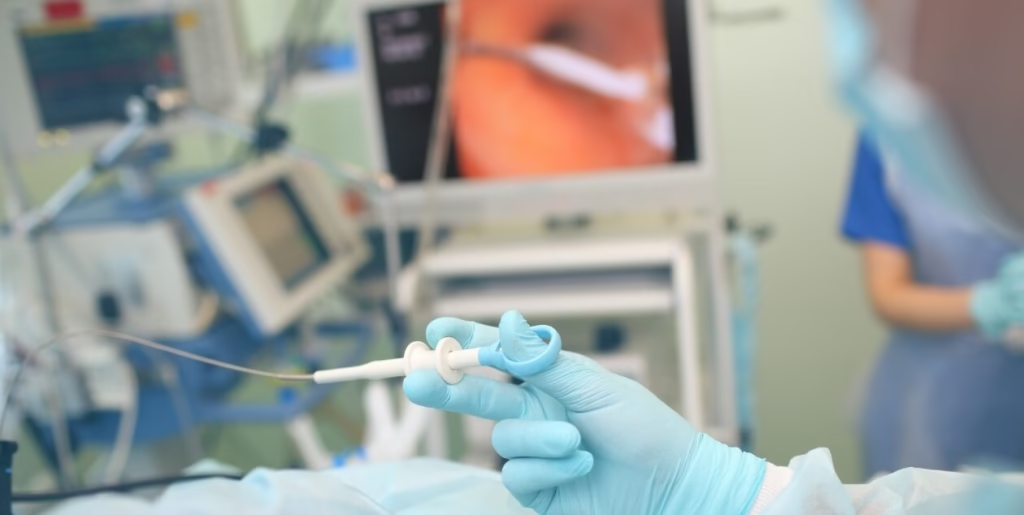
大腸カメラ検査も同様に6つの段階で英語表現を整理します。
1. 予約・事前診察
予約
- 英語表現: appointment
- 発音: [əˈpɔɪntmənt]
- 意味・解説: 大腸カメラ検査の日程を予約すること
- 例文: “Book your colonoscopy appointment in advance.”
- 和訳: 「大腸カメラ検査の予約を事前に取ってください。」
事前診察
- 英語表現: preliminary consultation
- 発音: [ˌpriːˈlɪmɪnɛri ˌkɑːnsəlˈteɪʃən]
- 意味・解説: 既往症や服薬について相談する検査前診察
- 例文: “During the preliminary consultation, discuss your medical history.”
- 和訳: 「事前診察で既往歴について相談してください。」
2. 検査前の食事・下剤準備
腸管準備
- 英語表現: bowel preparation
- 発音: [ˈbaʊəl ˌprɛpəˈreɪʃən]
- 意味・解説: 大腸内を空にするための準備プロセス
- 例文: “Proper bowel preparation is essential for accurate examination.”
- 和訳: 「正確な検査のため、適切な腸管準備が不可欠です。」
下剤
- 英語表現: laxative
- 発音: [ˈlæksətɪv]
- 意味・解説: 腸内容物を排出するために服用する薬剤
- 例文: “Take the prescribed laxative as instructed by your doctor.”
- 和訳: 「医師の指示通りに下剤を服用してください。」
3. 来院・受付
受付
- 英語表現: check-in
- 発音: [ˈʧɛk ɪn]
- 意味・解説: 病院到着後の受付手続き
- 例文: “Please check in at the reception desk upon arrival.”
- 和訳: 「到着後、受付でチェックインしてください。」
同意書
- 英語表現: consent form
- 発音: [kənˈsɛnt fɔːrm]
- 意味・解説: 検査に同意することを示す書類
- 例文: “Please sign the consent form before the procedure.”
- 和訳: 「検査前に同意書にサインしてください。」
4. 検査実施
大腸カメラ挿入
- 英語表現: colonoscope insertion
- 発音: [kəˈlɒnəˌskoʊp ɪnˈsɜːrʃən]
- 意味・解説: 肛門から大腸カメラを挿入すること
- 例文: “The doctor will perform colonoscope insertion carefully.”
- 和訳: 「医師が慎重に大腸カメラを挿入します。」
観察
- 英語表現: observation
- 発音: [ˌɑːbzərˈveɪʃən]
- 意味・解説: 大腸内部を詳細に観察すること
- 例文: “During observation, the doctor examines the entire colon.”
- 和訳: 「観察中、医師は大腸全体を調べます。」
5. 検査後の安静・リカバリー
回復
- 英語表現: recovery
- 発音: [rɪˈkʌvəri]
- 意味・解説: 検査後の回復期間
- 例文: “Recovery time is typically 20-30 minutes after colonoscopy.”
- 和訳: 「大腸カメラ検査後の回復時間は通常20-30分です。」
検査後の安静
- 英語表現: post-examination rest
- 発音: [pəʊst ɪgˈzæmɪˌneɪʃən rɛst]
- 意味・解説: 検査後に必要な安静時間
- 例文: “Post-examination rest helps ensure your safety after sedation.”
- 和訳: 「検査後の安静は鎮静後の安全確保に役立ちます。」
6. 結果説明・判定
結果説明
- 英語表現: explanation of results
- 発音: [ˌɛkspləˈneɪʃən əv rɪˈzʌlts]
- 意味・解説: 検査結果についての詳細な説明
- 例文: “The doctor will provide a detailed explanation of results.”
- 和訳: 「医師が結果について詳しく説明します。」
病理報告
- 英語表現: pathology report
- 発音: [pəˈθɒlədʒi rɪˈpɔːrt]
- 意味・解説: 採取した組織の病理学的検査結果
- 例文: “The pathology report will be available in a few days.”
- 和訳: 「病理報告は数日後に出ます。」
医師側の準備・実施・結果判定表現
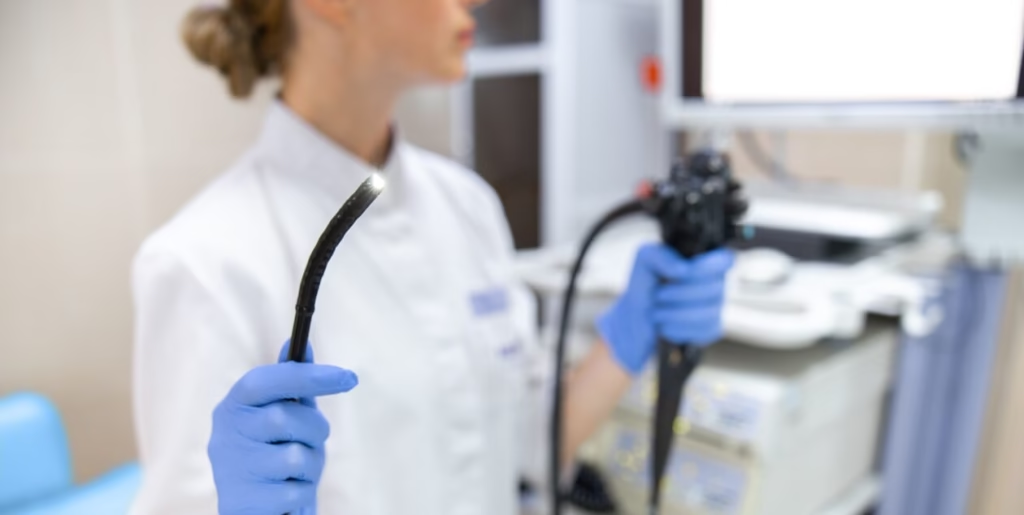
1. 準備(Physician Preparation)
機器点検
- 英語表現: equipment check
- 発音: [ɪˈkwɪpmənt ʧɛk]
- 意味・解説: 検査に使用する機器の動作確認
- 例文: “The physician performs an equipment check before each procedure.”
- 和訳: 「医師は各検査前に機器点検を行います。」
インフォームドコンセント
- 英語表現: informed consent
- 発音: [ɪnˈfɔːrmd kənˈsɛnt]
- 意味・解説: 患者に十分な説明をした上での同意取得
- 例文: “Obtaining informed consent is a crucial step before any procedure.”
- 和訳: 「インフォームドコンセントの取得は検査前の重要なステップです。」
患者体位調整
- 英語表現: patient positioning
- 発音: [ˈpeɪʃənt ˌpɒzɪˈʃn̩ɪŋ]
- 意味・解説: 検査に適した患者の体位への調整
- 例文: “Proper patient positioning ensures a safe and effective examination.”
- 和訳: 「適切な患者体位調整により安全で効果的な検査が可能になります。」
服薬確認
- 英語表現: medication review
- 発音: [ˌmɛdɪˈkeɪʃən rɪˈvjuː]
- 意味・解説: 患者の現在の服薬状況の確認
- 例文: “A thorough medication review helps prevent complications.”
- 和訳: 「徹底した服薬確認は合併症の予防に役立ちます。」
2. 実施(During Procedure)
内視鏡挿入
- 英語表現: scope insertion
- 発音: [skoʊp ɪnˈsɜːrʃən]
- 意味・解説: 内視鏡を体内に挿入する手技
- 例文: “Gentle scope insertion minimizes patient discomfort.”
- 和訳: 「やさしい内視鏡挿入により患者の不快感を最小限に抑えます。」
病変観察
- 英語表現: lesion observation
- 発音: [ˈliːʒən ˌɑːbzərˈveɪʃən]
- 意味・解説: 異常な病変を詳細に観察すること
- 例文: “Careful lesion observation is essential for accurate diagnosis.”
- 和訳: 「正確な診断のため、注意深い病変観察が不可欠です。」
生検
- 英語表現: biopsy
- 発音: [ˈbaɪɒpsi]
- 意味・解説: 組織の一部を採取して検査すること
- 例文: “A biopsy may be performed if suspicious tissue is found.”
- 和訳: 「疑わしい組織が見つかった場合、生検を行う場合があります。」
止血
- 英語表現: hemostasis
- 発音: [ˌhiːmoʊˈsteɪsɪs]
- 意味・解説: 出血を止める処置
- 例文: “Immediate hemostasis is performed if bleeding occurs.”
- 和訳: 「出血が起きた場合、直ちに止血処置を行います。」
ポリープ切除
- 英語表現: polyp removal
- 発音: [ˈpɑːlɪp rɪˈmuːvəl]
- 意味・解説: ポリープを除去する処置
- 例文: “Polyp removal can be performed during the same procedure.”
- 和訳: 「ポリープ切除は同じ検査中に実施できます。」
3. 結果判定・説明(Result Interpretation)
内視鏡所見
- 英語表現: endoscopic findings
- 発音: [ˌɛndəˈskɑːpɪk ˈfaɪndɪŋz]
- 意味・解説: 内視鏡検査で観察された所見
- 例文: “The endoscopic findings will be documented in your medical record.”
- 和訳: 「内視鏡所見は医療記録に記録されます。」
病理診断
- 英語表現: pathological diagnosis
- 発音: [ˌpæθəˈlɒdʒɪkl ˌdaɪəgˈnoʊsɪs]
- 意味・解説: 採取した組織の病理学的診断
- 例文: “The pathological diagnosis will provide detailed information about the tissue.”
- 和訳: 「病理診断により組織の詳細な情報が得られます。」
結果説明
- 英語表現: result explanation
- 発音: [rɪˈzʌlt ˌɛkspləˈneɪʃən]
- 意味・解説: 検査結果の詳細な説明
- 例文: “A comprehensive result explanation helps patients understand their condition.”
- 和訳: 「包括的な結果説明により患者は自分の状態を理解できます。」
フォローアップ指示
- 英語表現: follow-up recommendation
- 発音: [ˌfɑːloʊˈʌp ˌrɛkəmɛnˈdeɪʃən]
- 意味・解説: 今後の治療や検査に関する推奨事項
- 例文: “Follow-up recommendations ensure continuity of care.”
- 和訳: 「フォローアップ指示により継続的なケアが確保されます。」
検査機器・器具の英語表現
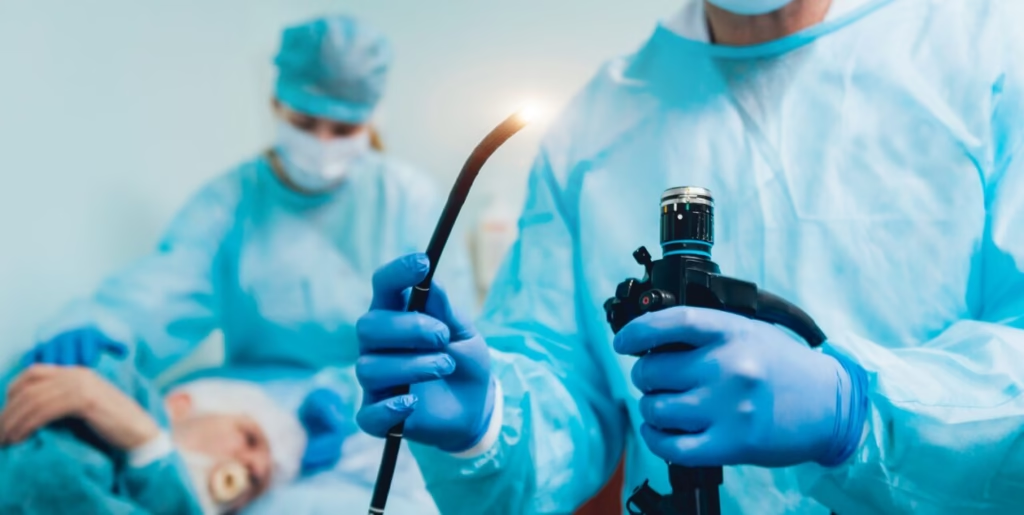
主要機器
内視鏡本体
- 英語表現: endoscope
- 発音: [ˈɛndəˌskoʊp]
- 意味・解説: 先端にカメラと光源を備えた細長い管状機器
- 例文: “The physician inserts the endoscope to observe the digestive tract.”
- 和訳: 「医師は内視鏡を挿入して消化管を観察します。」
胃カメラ
- 英語表現: gastroscope
- 発音: [ˈɡæstrəˌskoʊp]
- 意味・解説: 胃観察専用の内視鏡
- 例文: “A gastroscope allows direct visualization of the stomach.”
- 和訳: 「胃カメラで胃の中を直接観察します。」
大腸カメラ
- 英語表現: colonoscope
- 発音: [kəˈlɒnəˌskoʊp]
- 意味・解説: 大腸観察専用の内視鏡
- 例文: “The colonoscope is used to inspect the entire colon.”
- 和訳: 「大腸カメラで大腸全体を観察します。」
処置器具
生検鉗子
- 英語表現: biopsy forceps
- 発音: [ˈbaɪɒpsi ˈfɔːrsɪps]
- 意味・解説: 組織採取に使う鉗子状の器具
- 例文: “Biopsy forceps are used to collect tissue samples.”
- 和訳: 「生検鉗子で組織を採取します。」
ポリープ切除スネア
- 英語表現: polypectomy snare
- 発音: [ˌpɒlɪˈpɛktəmi sneə]
- 意味・解説: ポリープ切除用のワイヤー状器具
- 例文: “The polypectomy snare removes polyps during the procedure.”
- 和訳: 「ポリープ切除スネアで検査中にポリープを除去します。」
止血デバイス
- 英語表現: hemostatic device
- 発音: [ˌhiːmoʊˈstætɪk dɪˈvaɪs]
- 意味・解説: 出血を止めるための医療機器
- 例文: “A hemostatic device is applied to control bleeding.”
- 和訳: 「止血デバイスで出血をコントロールします。」
周辺機器
内視鏡画像モニター
- 英語表現: endoscopy monitor
- 発音: [ɪnˈdɒskəpi ˈmɒnɪtər]
- 意味・解説: 内視鏡の映像を表示するモニター
- 例文: “The endoscopy monitor displays live images from inside the body.”
- 和訳: 「内視鏡画像モニターが体内の映像を映し出します。」
吸引装置
- 英語表現: suction device
- 発音: [ˈsʌkʃən dɪˈvaɪs]
- 意味・解説: 唾液や消化液等を吸引する装置
- 例文: “A suction device removes secretions for a clearer view.”
- 和訳: 「吸引装置で分泌物を除去し視界を確保します。」
バルーン拡張カテーテル
- 英語表現: balloon dilator
- 発音: [bəˈluːn ˈdaɪleɪtə]
- 意味・解説: 消化管の狭窄部を拡張するための風船状器具
- 例文: “A balloon dilator may be used to treat strictures.”
- 和訳: 「狭窄の治療にバルーン拡張カテーテルが使われます。」
電気メス
- 英語表現: electrocautery
- 発音: [ɪˌlɛktrəˈkɔːtəri]
- 意味・解説: 電気による切開や止血装置
- 例文: “Electrocautery is used to cut tissue or stop bleeding.”
- 和訳: 「電気メスで組織を切開したり止血したりします。」
実践的な会話例
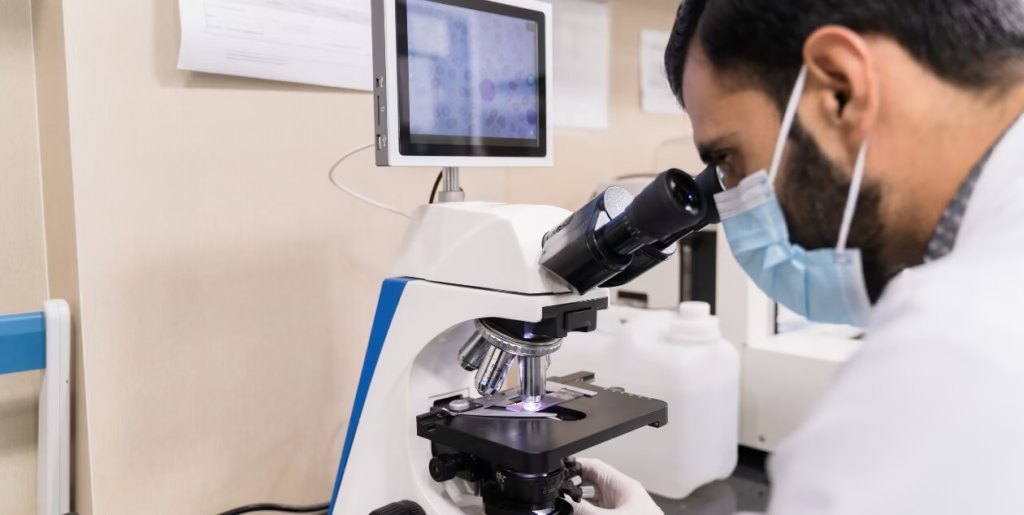
胃カメラ検査の会話例
Patient: Hello, I would like to make an appointment for a gastroscopy.
Receptionist: Certainly. We will schedule a preliminary consultation first to check your symptoms and explain the procedure.
Nurse: Please remember to follow a dietary restriction and fast after 9 p.m. the day before the test.
Patient: So, I can drink water after 9 p.m., but no food at all?
Nurse: Yes, that’s correct.
Nurse (on the day of the procedure): Before the examination, you’ll take an anti-foaming agent and receive throat anesthesia to reduce discomfort.
Patient: Will this help with any pain during the procedure?
Nurse: Yes, it helps significantly.
Doctor: Now, I will perform the endoscope insertion and begin observation of your stomach.
Patient: Will it be painful?
Doctor: You might feel some discomfort, but it should only take around 5 to 10 minute
Nurse (after the procedure): Please stay in the recovery room for post-examination rest for about 30 minutes.
Patient: When can I eat or drink again?
Nurse: Please wait at least one hour after the examination before eating or drinking.
Doctor: After reviewing the images, I will give you an explanation of results. If we took samples, the biopsy findings may take a few days.
Patient: Will I get some results today?
Doctor: Yes, some preliminary results are available today.
患者: こんにちは。胃カメラ検査の予約をしたいのですが。
受付: かしこまりました。まずは症状確認と手順説明のために事前診察の予約をいたします。
看護師: 検査前日は食事制限を守り、夜9時以降は絶食してください。
患者: 夜9時以降は水は飲んでいいけど、食べ物は全くダメですか?
看護師: はい、その通りです。
看護師(検査当日): 検査前に消泡剤を飲み、苦痛を軽減するために喉の麻酔を行います。
患者: 検査中の痛みは和らぎますか?
看護師: はい、かなり楽になります。
医師: これから内視鏡を挿入して、胃の観察を始めます。
患者: 痛みはありますか?
医師: 多少の違和感を感じるかもしれませんが、5〜10分程度で終わります。
看護師(検査後): 検査後はリカバリー室で約30分ほど安静にしてください。
患者: いつから飲食できますか?
看護師: 検査後少なくとも1時間はお控えください。
医師: 画像を確認後に結果説明をいたします。もし組織を採取していれば生検の結果は数日かかります。
患者: 一部の結果は今日わかりますか?
医師: はい、一部は当日お伝えできます。
大腸カメラ検査の会話例
Patient: Hello, I would like to schedule an appointment for a colonoscopy.
Receptionist: Certainly. We will first arrange a preliminary consultation to discuss your medical history and explain the procedure.
Nurse: Please follow the bowel preparation instructions by taking the prescribed laxative and adhering to the dietary restrictions before the exam.
Patient: I have completed the bowel preparation and taken the laxative as instructed.
Nurse (on the day of procedure): Please submit your signed consent form and change into the examination gown.
Patient: All set. What should I expect during the procedure?
Doctor: We will perform colonoscope insertion through the anus and begin observation of your colon. If we find any polyps, we can remove them using the polypectomy snare.
Patient: Will the procedure be painful?
Doctor: With sedation, most patients feel minimal discomfort. The procedure typically takes about 20 to 30 minutes.
Nurse (after the procedure): You will rest in the recovery room for post-examination rest for approximately 30 minutes.
Patient: When can I eat or drink afterward?
Nurse: You should wait at least one hour before eating or drinking. Avoid driving yourself for the rest of the day.
Doctor: After reviewing the images, I will give you an explanation of results. If biopsies were taken, pathology reports may take a few days.
Patient: Can I get some results today?
Doctor: Yes, some preliminary findings can be shared today.
患者: こんにちは。大腸カメラ検査の予約をしたいです。
受付: かしこまりました。まずは既往歴を伺い、検査の説明をするための事前診察を行います。
看護師: 検査前の腸の準備として、指示された下剤を飲み、食事制限を守ってください。
患者: 指示通りに腸の準備をして、下剤も服用しました。
看護師(検査当日): 署名済みの同意書を提出して、検査着にお着替えください。
患者: 準備できました。検査の間はどんな感じですか?
医師: 肛門から大腸カメラを挿入して、大腸の観察を行います。もしポリープが見つかれば、ポリープ切除スネアで取り除きます。
患者: 検査は痛いですか?
医師: 鎮静剤を使うので、ほとんどの方はあまり痛みを感じません。検査は通常20〜30分ほどで終わります。
看護師(検査後): 検査後はリカバリー室で約30分ほど安静にしてください。
患者: 検査後、いつから飲食できますか?
看護師: 少なくとも1時間は控えてください。また、その日は運転などの自動車操作は控えてください。
医師: 画像を確認後、結果説明をいたします。もし生検をしていれば、病理結果が出るまで数日かかります。
患者: 一部の結果は当日わかりますか?
医師: はい、一部の予備結果は当日お伝えできます。
“Comprehensive Guide to Endoscopy”を読んでみましょう!
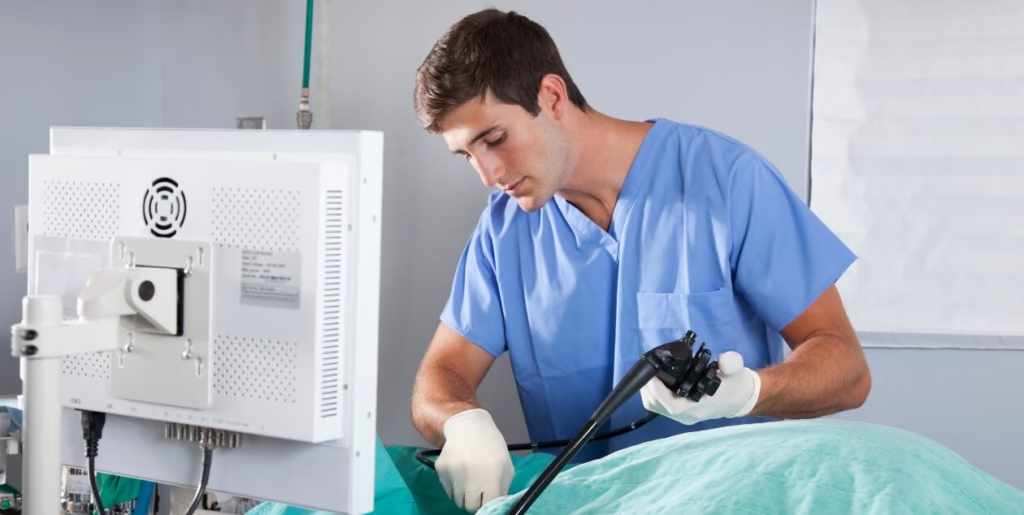
Comprehensive Guide to Endoscopy
1. What is Endoscopy?
An endoscopy is a medical procedure using a flexible tube with a camera (called an endoscope) to visualize the inside of the digestive tract. There are several types, including gastroscopy (for the stomach) and colonoscopy (for the colon), as well as specialized procedures such as the upper gastrointestinal (GI) X-ray examination (also known as the barium swallow test).
2. Types of Endoscopic Examinations
- Gastroscopy: Also called gastroscopic examination, this is performed to inspect the stomach and upper digestive tract.
- Colonoscopy: Examination of the colon or large intestine.
- Upper gastrointestinal (GI) X-ray examination/Barium swallow test: X-ray imaging with a contrast agent to view the upper digestive system.
3. Booking an Appointment and Preliminary Consultation
To undergo an endoscopy, you need to book an appointment at the clinic or hospital. Prior to the test, a preliminary consultation is usually conducted to review your symptoms, medical history, and to explain the purpose and process of the procedure.
“Please make an appointment for your gastroscopy and come in for a preliminary consultation.”
4. Preparation before the Procedure
For Gastroscopy:
- Dietary restriction: Eat only easily digestible foods the day before, and finish your meal by 9 p.m.
- Fasting: No food after 9 p.m. Drink water only as directed.
“Observe the dietary restriction and commence fasting as instructed.”
For Colonoscopy:
- Bowel preparation: Eat a low-residue diet and avoid fibrous foods or seeds for several days prior.
- Laxative: Take the prescribed laxative the evening before and/or morning of the examination to empty the colon.
“Follow the instructions for bowel preparation and take your laxative as prescribed.”
5. On the Day: Check-in and Consent
When you arrive at the facility:
- Submit your consent form.
- Change into an examination gown.
- Staff will confirm your preparation status.
“Please submit your signed consent form and change into the examination gown.”
6. Before the Procedure
You may receive preparatory medications such as:
- Anti-foaming agent: To reduce bubbles and clear visibility.
- Throat anesthesia: For gastroscopy, this numbs the throat to minimize discomfort.
- Sedative: May be given for comfort, especially before a colonoscope insertion.
7. During the Examination
- For gastroscopy, the endoscope insertion is performed via the mouth or nose. The doctor will start observation of the esophagus, stomach, and duodenum.
- For colonoscopy, the colonoscope insertion is through the anus to observe the colon.
- As needed, the doctor may:
- Perform a biopsy (collect a tissue sample with biopsy forceps)
- Remove polyps using a polypectomy snare
- Control bleeding with a hemostatic device
- The exam is displayed in real time on the endoscopy monitor.
8. After the Procedure
- Rest in the recovery room for post-examination rest (generally for 20–30 minutes if sedatives were used).
- Refrain from eating or drinking for at least one hour or as advised, especially if a biopsy was performed.
- Operation/procedure reports and images are reviewed with you by your physician.
“You will rest in the recovery room for about 30 minutes. Please wait at least one hour before eating or drinking.”
9. Results and Explanation
- The doctor will provide an explanation of results based on the exam findings.
- If tissue samples were taken, a pathology report or biopsy result may take several days.
“After reviewing your images, we will give a thorough explanation of results. If a biopsy was performed, the results will be available in a few days.”
10. Common Equipment
- Endoscope
- Gastroscope (for stomach)
- Colonoscope (for colon)
- Biopsy forceps
- Polypectomy snare
- Hemostatic device
- Endoscopy monitor
- Suction device
- Balloon dilator
- Electrocautery
11. Safety and Follow-up
Endoscopic procedures are generally safe, but potential risks (bleeding, infection, perforation) will be explained, and informed consent is mandatory.
If abnormal findings are discovered, your physician will discuss further investigation or treatment based on the endoscopic findings and pathological diagnosis. A follow-up recommendation may be provided as needed.
内視鏡検査に関する詳細ガイド
1. 内視鏡検査とは?
内視鏡検査とは、カメラ付きの柔軟な管(内視鏡)を使って消化管の内部を観察する医療処置です。胃の検査に用いる胃部内視鏡検査(gastroscopy)や、大腸の検査に使う大腸内視鏡検査(colonoscopy)、そして造影剤を用いる胃部レントゲン検査(upper gastrointestinal (GI) X-ray examination)、別名バリウム検査(barium swallow test)などがあります。
2. 内視鏡検査の種類
- 胃部内視鏡検査:別名胃カメラ検査。胃や上部消化管を観察します。
- 大腸内視鏡検査:大腸や結腸を観察します。
- 胃部レントゲン検査/バリウム検査:造影剤を飲んで上部消化管をX線で撮影します。
3. 予約と事前診察
内視鏡検査を受けるには、施設で予約をし、検査前に症状や病歴の確認、検査内容の説明をするための事前診察を受ける必要があります。
「胃部内視鏡検査の予約をして、事前診察で説明を受けてください。」
“Please make an appointment for your gastroscopy and come in for a preliminary consultation.”
4. 検査前の準備
胃部内視鏡検査の場合:
- 食事制限:前日は消化に良い食事をし、午後9時までに夕食を終えます。
- 絶食:午後9時以降は食事をせず、水分のみ指示通り摂取します。
「食事制限を行い、指示された時間から絶食を始めてください。」
“Observe the dietary restriction and commence fasting as instructed.”
大腸内視鏡検査の場合:
- 腸の準備(bowel preparation):数日前から繊維質や種を含む食べ物を避け低残渣食に。
- 下剤(laxative):検査前夜や当日に指示された下剤を服用し、腸を空にします。
「指示通り腸の準備をし、下剤を服用してください。」
“Follow the instructions for bowel preparation and take your laxative as prescribed.”
5. 検査当日:受付と同意
来院後は、
- 署名済みの同意書を提出します。
- 検査着に着替えます。
- スタッフが準備状況を確認します。
「署名済みの同意書を提出し、検査着にお着替えください。」
“Please submit your signed consent form and change into the examination gown.”
6. 検査前の処置
検査開始前に以下が行われることがあります:
- 消泡剤:泡を減らして視界を良くします。
- 喉の麻酔:胃部内視鏡検査ではのどに麻酔をして苦痛を軽減します。
- 鎮静剤:特に大腸内視鏡検査のときに使用され、リラックスさせるために投与されます。
7. 検査中
- 胃部内視鏡検査では、口や鼻から内視鏡挿入し、食道・胃・十二指腸を観察します。
- 大腸内視鏡検査では肛門から大腸内視鏡挿入を行い大腸を観察します。
- 必要があれば、
- 生検(生検鉗子で組織採取)
- ポリープ切除(ポリープ切除スネア使用)
- 出血の止血(止血デバイス使用)
検査映像はリアルタイムで内視鏡画像モニターに映し出されます。
8. 検査後
- リカバリー室で検査後の安静を取ります(鎮静剤使用時は20〜30分程度)。
- 食事や飲み物は生検を行った場合は特に最低1時間控えます。
- 医師による検査レポートや画像の説明があります。
「約30分間リカバリー室で休憩し、検査後1時間は飲食を控えてください。」
“You will rest in the recovery room for about 30 minutes. Please wait at least one hour before eating or drinking.”
9. 結果説明
- 医師より検査所見の結果説明を受けます。
- 生検を行った場合は、病理診断報告に数日かかります。
「画像を確認後、詳しい結果説明を行います。生検結果は数日かかります。」
“After reviewing your images, we will give a thorough explanation of results. If a biopsy was performed, the results will be available in a few days.”
10. 検査で使用する主な機器
- 内視鏡(endoscope)
- 胃カメラ(gastroscope)
- 大腸カメラ(colonoscope)
- 生検鉗子(biopsy forceps)
- ポリープ切除スネア(polypectomy snare)
- 止血デバイス(hemostatic device)
- 内視鏡画像モニター(endoscopy monitor)
- 吸引装置(suction device)
- バルーン拡張カテーテル(balloon dilator)
- 電気メス(electrocautery)
11. 安全性とフォローアップ
内視鏡検査は一般的に安全ですが、出血や感染、穿孔(穴があく)などのリスクがあります。検査前にリスク説明とインフォームドコンセント(同意)を必ず受けます。
異常が見つかった場合は、医師から内視鏡所見や病理診断に基づいた今後の治療や再検査のフォローアップ指示が説明されます。
まとめ
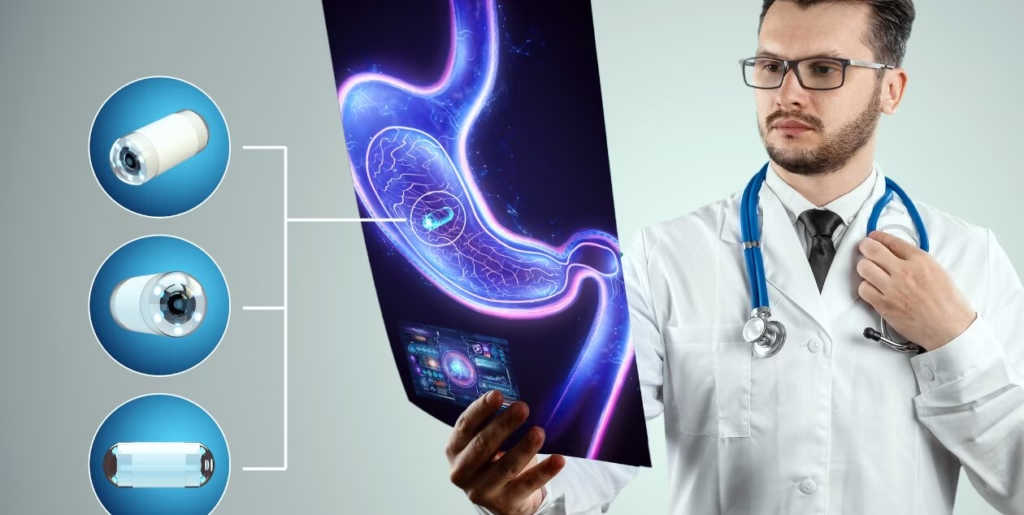
本記事では、胃カメラと大腸カメラという主要な内視鏡検査に焦点を当て、その全工程で必要となる英語表現を体系的にご紹介しました。検査の予約から事前準備、当日のスムーズな処置、そして検査後のリカバリーや結果説明に至るまで、それぞれの場面で医療従事者が知っておくべき重要なフレーズを深く掘り下げてきました。
これらの英語表現は、単なる単語の暗記ではなく、実際の医療現場における患者さんとのコミュニケーションや、同僚との情報共有に直結する実践的なものです。発音記号や詳しい解説、豊富な例文、そしてリアルな会話例を通じて、検査の流れの中で「いつ」「どのように」英語を使うべきか、具体的なイメージが掴めたことと思います。また、検査機器や器具の専門名称も学ぶことで、より専門的な英語力を身につけられたのではないでしょうか。
内視鏡検査における正確な英語コミュニケーション能力は、外国人患者さんへの質の高いケアを提供し、彼らの不安を軽減するために極めて重要です。この記事が、あなたの医療英語学習の一助となり、グローバルな医療現場で自信を持って内視鏡検査に携わるための確かな基盤となることを心から願っています。
英語・英会話の基礎を学びたい方はこちらから! ↓

語彙力強化したい方はこちらから! ↓
